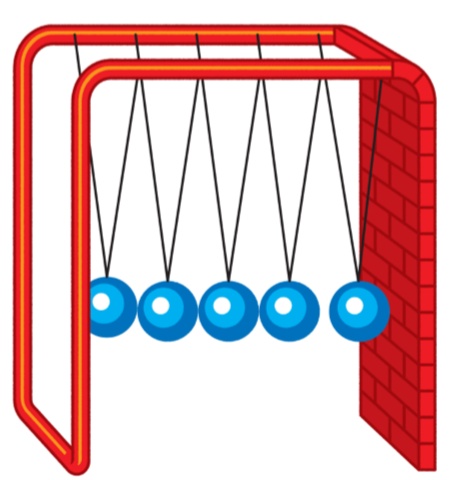Skeptics worry about the future of the field, but opportunities for new discoveries abound.

“物理学家沉迷于追求数学的优美,却正在丧失解决新问题的能力。”“顶级的物理学家不再关心物理现实–当然他们也不用关心这些。”“科学完了。”
“Physicists, bewitched by mathematical beauty, are failing to solve new problems.” “High-class physicists no longer care about physical reality—nor should they.” “Science is over.”
这几句话简要但还算准确地概括了近期出版的几本新书的内容,它们分别是:萨比娜·霍森菲尔德(Sabine Hossenfelder)的《迷失在数学里》(Lost in Math)、理查德·达维德(Richard Dawid)的《弦论与科学方法》(String Theory and the Scientific Method)以及约翰·霍根(John Horgan)的《科学的尽头》(The End of Science)。我常被问起如何评论这些书及书中的悲观论调。对理论物理学家来说,这样的言论是一种指责,言下之意是今天的物理学把自己逼进了死胡同。
Those are simplified but not entirely misleading summaries of recent books by Sabine Hossenfelder (“Lost in Math”), Richard Dawid (“String Theory and the Scientific Method”) and John Horgan (“The End of Science”), respectively. I get asked about these books and their dismal messages frequently. For theoretical physicists they are a kind of reproach, since they argue that today’s physics has gotten itself into a dead-end.
然而,这几本书对此问题的描述却各不相同。霍森菲尔德女士认为,物理学家应该多关注物理问题的现实性,达威德先生却觉得忽略现实无伤大碍,而霍根先生则宣称物理学家的时代已经过去了,他们应该转行。这到底是怎么了?
But they disagree in their descriptions of the problem. Ms. Hossenfelder argues that physicists need to pay more attention to reality, Mr. Dawid that they can safely ignore it. Mr. Horgan, meanwhile, thinks that physicists’ time is past and they should do something else instead. What’s going on here?
今天的物理学是不是在健康地发展?对此,或许大家有不同的观点。但任何一个明理的人都不会去质疑物理学已经取得的巨大成功。如果没有20世纪量子物理和相对论的革命性突破,也就没有晶体管、激光器、GPS、核能等等,这些支撑起现代社会的科学技术。
Opinions may differ about the current health of physics, but no reasonable person can dispute that it has been a hugely successful enterprise. Without revolutionary 20th-century breakthroughs in quantum physics and relativity, modern technology—including transistors, lasers, GPS, nuclear power and much more—would be literally unthinkable.
我们对物质世界的认知在20世纪后半叶就已经达到了一个非常高的高度。所谓的标准模型提供了一套完整且经过充分验证的方程,来描述普通物质在普通条件下的行为(在这里你必须非常宽泛地理解“普通”这个词)。
In the latter part of the 20th century our theoretical understanding reached a very high plateau. The so-called Standard Model offers complete and well-tested equations for the behavior of ordinary matter under ordinary conditions (allowing a very generous interpretation of the word “ordinary”).
标准模型的理论框架构建于20世纪70年代。它预测并促成了一系列卓越的新发现与新观测,其中最典型的例子就是希格斯玻色子和引力波。可以说,标准模型理论代表了人类成就的一个巅峰。
The theoretical framework of the Standard Model was in place by the 1970s. This body of understanding predicted and enabled spectacular new discoveries and observations, notably including the Higgs boson and gravitational waves. It is a pinnacle of human achievement.
然而这个巨大的成果却是亦苦亦甜。过去,基础物理的任何进展同时也会带来相应的实际应用与效益。可今天,基础物理的发现已经很难对工程、化学或者生物学产生重大影响了。之所以会形成这样的局面,正是因为我们目前的物理知识储备已经超越了这些领域发展的需求–毕竟,21世纪技术背后的那些物理原理早在20世纪50年代之前就都被发现了。
But this grand success is bittersweet. In earlier times, research that added to or changed the theoretical foundations of physics also had practical uses and benefits. Today, however, discoveries in fundamental physics are unlikely to have a significant impact in engineering, chemistry or biology, precisely because we already have well-tested foundations that seem more than adequate for those applications. The physical principles that empower 21st-century technologies were all known by the 1950s.
百尺竿头更进一步是很困难的。但伟大的机遇依然存在。我们可以利用现有的物理知识来制造新颖又实用的东西,比如利用量子世界的丰富特性更加有效地存储和操作信息。与此同时,还有许多重要的理论问题等待着我们的回答。比如,我们仍然不清楚宇宙的大部分质量到底从何而来。
When you have reached a high plateau, ascending still higher gets more difficult. Yet glorious opportunities remain. We can apply our existing physical knowledge to make ingenious and useful things, like computers that leverage the richness of the quantum world to store and manipulate information more effectively. And important theoretical questions remain to be answered. For instance, we still haven’t got a clear picture of what most of the universe, measured by mass, is made of.
我的英雄理查德·费曼(Richard Feynman)曾开玩笑地说:“爱因斯坦是个巨人。他的头虽然在云里,脚却踩在地上。而我们这些个子不高的人则必须做出一个选择!”可我认为今天的我们不需要选择,因为我们已经站在了百尺竿头。事实上,当今的物理学可以说尤为激动人心:我们正尝试着利用对“普通”物质的理解来制造机器助手–比如计算机、传感器和无人机,它们增强了我们的思维能力,帮助我们完成各种任务,还可以让我们全方位地勘察周围的世界。
My hero Richard Feynman joked that “Einstein was a giant: His head was in the clouds, but his feet were on the ground. Those of us who are not so tall have to choose!” But I think this is a false choice. Really, the plateau we’ve reached is a good place to be. In fact, physics is especially exciting these days, because we’re learning how to use our understanding of “ordinary” matter to make machine assistants—computers, sensors and drones—that will amplify our thoughts, do useful things and go reconnoitering in all directions.


评论(0)